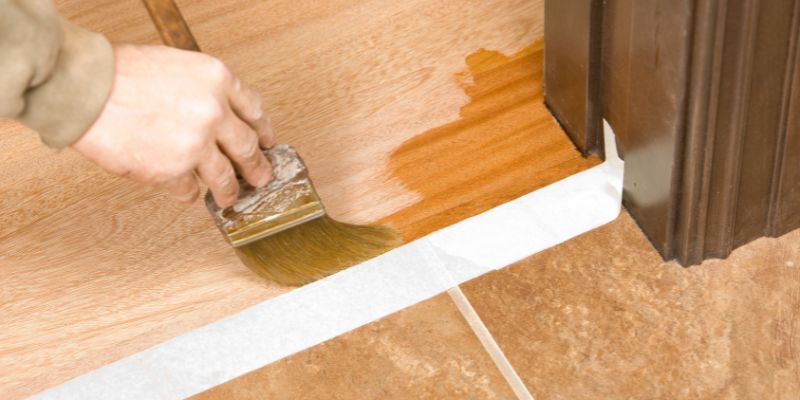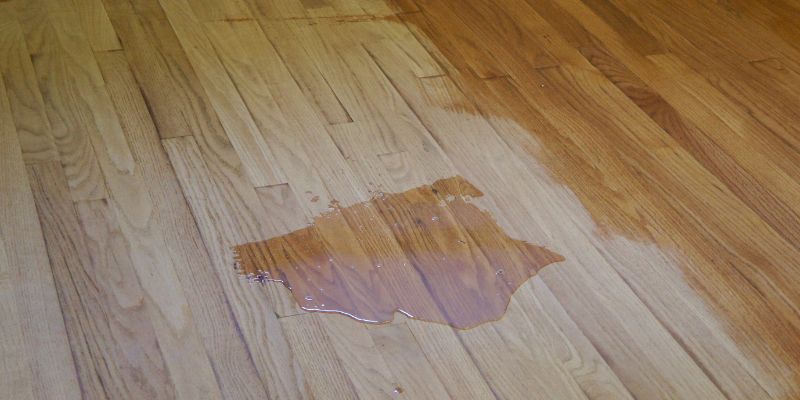Yes, polyurethane will dry in cold weather. In fact, polyurethane cures more slowly in colder temperatures.
Polyurethane is a widely used finishing material known for its durability and protective properties. It is often applied to wood surfaces to enhance their appearance and provide a layer of protection against moisture, chemicals, and wear. However, many people wonder whether polyurethane will dry properly in cold weather conditions.
The answer is yes, polyurethane will still dry in cold temperatures, but it will take longer compared to warmer conditions. This is because cold weather slows down the curing process of the polyurethane, causing it to dry at a slower rate. It’s important to note that extreme cold temperatures can affect the quality and performance of the finish, so it is best to avoid applying polyurethane in freezing conditions. Overall, while polyurethane may dry in cold weather, it is advisable to ensure moderate temperatures for optimal results.
Understanding Polyurethane
Polyurethane is a widely used and versatile material that offers numerous benefits for various applications. It is a type of synthetic resin that can be found in a variety of products, including coatings, adhesives, foams, and sealants. One of its key characteristics is its ability to form a durable and protective layer when applied to surfaces. In this article, we will delve deeper into the nature of polyurethane and explore its properties.

What Is Polyurethane?
Polyurethane is a polymer that is created by reacting an isocyanate compound with a polyol compound. The resulting chemical reaction forms a strong and flexible material that can be molded into different shapes. Its versatility allows it to be used for a wide range of applications, including insulation, flooring, automotive parts, and even furniture.
Properties Of Polyurethane
Polyurethane possesses several properties that make it highly desirable for various purposes:
- Durability: Polyurethane is known for its exceptional durability. It can withstand wear and tear, making it suitable for high-traffic areas.
- Flexible: Despite its durability, polyurethane remains flexible, ensuring it can adapt to movements, vibrations, and temperature changes.
- Chemical Resistance: Polyurethane is resistant to many chemicals, which enhances its suitability for protective coatings and sealants.
- Water Resistance: This material has excellent water resistance, making it ideal for outdoor applications.
- UV Stability: Some polyurethane formulations offer UV stability, meaning they can resist damage caused by sunlight exposure.
Polyurethane is commonly used as a finish for various surfaces due to its ability to enhance the appearance while providing protection against moisture, chemicals, and general wear. Whether it’s coating wooden furniture or sealing concrete floors, polyurethane delivers a long-lasting and attractive finish.
Will Polyurethane Dry In Cold Weather?
One common concern when using polyurethane is how it performs in cold weather. The drying process of polyurethane coatings can be affected by temperature, and extreme cold can significantly slow down the drying time. While polyurethane can still dry in cold weather, it may take longer compared to warmer temperatures.
It’s important to note that the temperature range in which polyurethane can dry effectively varies depending on the specific product and manufacturer’s recommendations. Generally, it is advisable to apply polyurethane coatings within a temperature range of 50°F to 90°F (10°C to 32°C) for optimal drying results.
If you are using polyurethane in colder conditions, there are a few things to keep in mind to ensure successful drying:
- Temperature: Try to maintain the temperature of the environment above the manufacturer’s recommended temperature range to facilitate proper drying.
- Time: In colder temperatures, it may take longer for the polyurethane to fully dry. Therefore, plan your project accordingly and allow for additional drying time.
- Humidity: High humidity can also affect the drying process. Consider using a dehumidifier or ensuring good air circulation to help control the humidity levels.
By taking these precautions and following the manufacturer’s instructions, you can still achieve a satisfactory outcome when using polyurethane in colder weather conditions.
Effects Of Cold Weather On Polyurethane Drying
Polyurethane drying may be hindered by cold weather conditions. Low temperatures can prolong the drying process and potentially affect the quality of the polyurethane finish.
How Cold Weather Affects Polyurethane Drying
Cold weather can have a significant impact on the drying process of polyurethane. The low temperatures cause certain challenges that can prolong the drying time and affect the final outcome of your project. Understanding these effects is crucial for ensuring a successful polyurethane application in cold weather conditions.
Challenges Faced In Cold Weather
It’s important to be aware of the challenges you may encounter when using polyurethane in cold weather. These conditions pose specific obstacles that can hinder the drying process and compromise the quality of the finish.
- Slower Drying Time: Cold weather slows down the evaporation rate of solvents in polyurethane. This means it will take longer for the coating to dry and cure properly. As a result, you will need to allocate a longer drying time and ensure your project is protected from any potential damage during this extended period.
- Thickness Issues: In colder temperatures, polyurethane tends to become thicker, making it more challenging to apply evenly. This can result in a less consistent finish and possible streaks or unevenness in the coating. It’s crucial to adjust your application technique to accommodate for the increased viscosity and ensure a smooth and even application.
- Reduced Adhesion: Cold weather can lead to reduced adhesion between the polyurethane and the surface it’s being applied to. As the coating dries more slowly, it’s essential to ensure proper surface preparation and priming to promote adhesion. Additionally, selecting a polyurethane formula specifically designed for cold weather conditions can help mitigate adhesion issues.
- Potential Discoloration: Polyurethane applied in cold weather may experience discoloration or clouding due to the slower drying process. This can be especially problematic when working with light or transparent coatings, where any discoloration is highly visible. Taking precautions such as working in a temperature-controlled environment and using appropriate lighting can help minimize the risk of discoloration.
Overall, it’s important to plan your polyurethane projects accordingly when working in cold weather. Being aware of the challenges faced and taking the necessary precautions can help ensure a successful and high-quality finish that will stand up to the test of time.
Tips And Techniques For Polyurethane Drying In Cold Weather
When it comes to applying polyurethane, the drying process can be a bit challenging, especially in cold weather. Low temperatures can significantly slow down the drying time of polyurethane, making the finish take longer to cure and potentially affecting its quality. However, with the right tips and techniques, you can ensure a successful polyurethane drying process even in cold weather conditions. In this article, we will explore some important considerations for achieving optimal results when drying polyurethane in cold weather.
Choosing The Right Polyurethane
The first step in achieving successful polyurethane drying in cold weather is selecting the right type of polyurethane. Not all polyurethane products are created equal when it comes to cold weather application. Look for polyurethane formulas specifically designed for low temperatures or cold weather use. These formulas are formulated to dry efficiently even in colder conditions and provide the desired finish. Take your time to research and choose a polyurethane product that is suitable for cold weather application.
Preparation And Application Tips
Proper preparation is crucial for any polyurethane application, and this is especially important in cold weather conditions. Before starting the process, ensure that the surface you will be applying polyurethane to is properly cleaned and free of any dirt, dust, or debris. This will contribute to achieving a smoother and more even finish.
When applying polyurethane, it’s essential to follow the manufacturer’s instructions carefully. In cold weather, you may need to adjust the application techniques slightly. Here are some tips:
- Apply thin coats: Instead of applying thick coats, opt for multiple thin coats. This allows each coat to dry more quickly and evenly.
- Use a proper brush: Choose a high-quality brush suitable for polyurethane application. A brush with synthetic bristles works well in cold weather as it helps with even application.
- Work in a well-ventilated area: Adequate ventilation is important during the drying process. Cold weather can make it tempting to work in enclosed spaces, but ensure there is enough fresh air circulation.
Accelerating The Drying Process
In cold weather, it can be helpful to employ some techniques to accelerate the drying process of polyurethane. Here are a few methods:
- Utilize heat sources: You can use heat sources like a heat gun or heaters to raise the ambient temperature around the polyurethane-coated surface. However, make sure to keep a safe distance and avoid potential fire hazards. It’s crucial to follow the manufacturer’s recommendations for the safe use of heat sources.
- Control humidity levels: High humidity can hinder the drying process. Consider using a dehumidifier in the room to maintain optimal humidity levels and expedite drying.
- Allow ample drying time: Patience is key in cold weather. Give each coat enough time to dry before applying the next one. Rushing the drying process can lead to imperfections and compromise the quality of the finish.
By choosing the right polyurethane, properly preparing the surface, following application tips, and employing techniques to accelerate drying, you can achieve excellent results when drying polyurethane in cold weather. Remember to always refer to the manufacturer’s guidelines and recommendations for best practices.

Frequently Asked Questions Of Will Polyurethane Dry In Cold Weather
Can Polyurethane Dry In Cold Weather?
Yes, polyurethane can dry in cold weather, but it takes longer compared to warmer temperatures. Low temperatures slow down the curing process, prolonging drying time. Ensure proper ventilation and choose a polyurethane product specifically designed for cold weather application for optimal results.
Will Cold Weather Affect The Quality Of Polyurethane Finish?
Cold weather can negatively affect the quality of the polyurethane finish. Extreme cold temperatures can cause the polyurethane to dry slower, leading to potential issues like dust or debris sticking to the surface. It’s best to apply polyurethane when the weather is between 70-80 degrees Fahrenheit for optimum results.
How Can I Speed Up The Drying Process In Cold Weather?
To speed up the drying process of polyurethane in cold weather, you can try the following techniques:
– Increase ventilation in the application area. – Use a portable heater to raise the temperature. – Choose a fast-drying polyurethane product specifically designed for cold weather conditions. Remember to follow the manufacturer’s instructions for best results.
Can I Apply Polyurethane In Cold Weather Outdoors?
While it’s possible to apply polyurethane in cold weather outdoors, it’s generally not recommended. The colder temperatures can affect the drying process and lead to subpar results. It’s best to wait for a milder day or consider applying polyurethane in a controlled indoor environment for better adherence and durability.
Conclusion
In colder temperatures, the drying process of polyurethane can be a bit challenging. However, with proper precautions and techniques, you can still achieve a successful finish. By ensuring a suitable environment, using the right products, and following recommended guidelines, you can overcome the obstacles posed by cold weather.
Remember to allow sufficient drying time and maintain adequate ventilation to ensure the best results.



3 thoughts on “Will Polyurethane Dry in Cold Weather? Discover the Best Tips and Techniques”